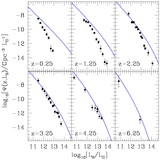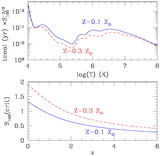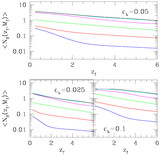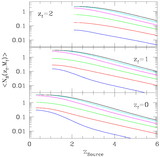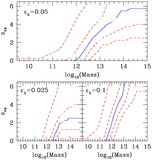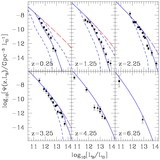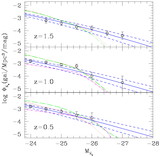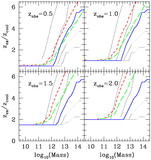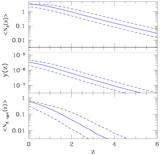Image Details

Caption: Fig. 11.
Comparison between feedback through ﹩S\geq S_{\mathrm{crit}\,}﹩ heating and the baryonic stripping of objects, which dominates in high‐redshift starbursts. Top: As in Fig. 5, with the solid line showing ﹩z_{\mathrm{ex}\,}﹩ such that ﹩\langle N_{S}( z_{\mathrm{ex}\,},\ M) \rangle =1﹩, while the short‐dashed lines correspond (top to bottom) to z‐values such that ﹩f_{S}( z,\ M) =1-\mathrm{exp}\,[ -\langle N_{S}( z,\ M) \rangle ] =0.25﹩, 0.5, 0.75, and 0.9. While quasars are able to strip the gas out of small perturbations that are not heated above Scrit, this occurs relatively late, long after the majority of objects in this mass range have formed. Bottom: Quasar luminosity function. In all panels the solid line shows our fiducial model, but including the additional feedback from baryonic stripping, while the long‐dashed lines show the WL03 model. Points are as in Fig. 1. Stripping occurs too late to have any impact on these results.
Copyright and Terms & Conditions
© 2004. The American Astronomical Society. All rights reserved. Printed in U.S.A.


